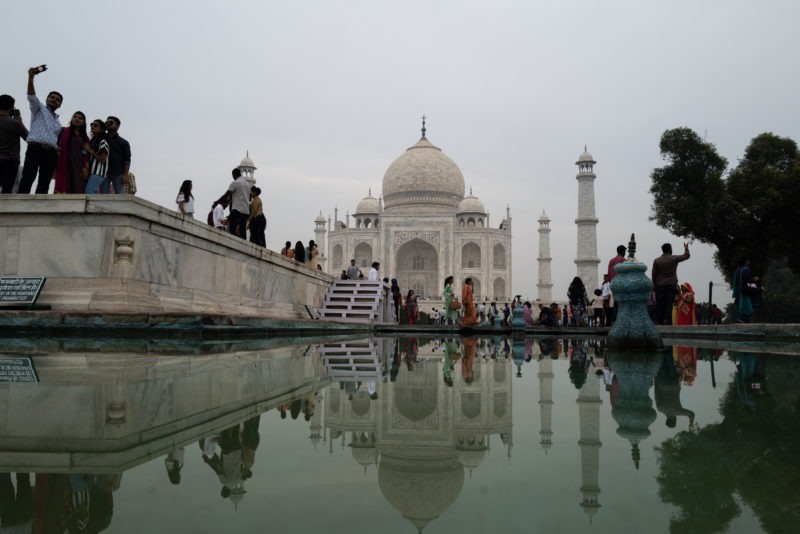Despite itchy eyes, tourists flock to Taj Mahal
Visitors were still thronging the Taj Mahal despite smog conditions (Jewel SAMAD)
Agra (India) (AFP) – Even with pollution cloaking northern India, visitors are still thronging the Taj Mahal, the shining marble mausoleum south of Delhi.
Every year around eight million people — mostly domestic tourists — visit the monument, built by a 17th-century Mughal emperor for his wife.
On Tuesday, with smog levels many times maximum levels, only a few of the roughly 10,000 daily visitors wore pollution masks, and most of them were foreigners.
Gildas Courtois, a French visitor, complained that he was coughing, his nose was running and that his eyes were sore.
“We don’t feel comfortable with it,” he told AFP. “It makes it bitter. Makes the visit bitter, because it’s a wonder, one of the wonders of the world.”
He had travelled to Agra from Delhi, the choking Indian megacity of 20 million people 250 kilometres (155 miles) to the north, where the air was “very, very bad”, he said.
A Japanese tourist wearing a mask at the Taj Mahal felt the same way.
“Breathing dirty air affects our health directly and instantly,” he said.
“I am feeling chest congestion and my eyes are watery. We are using masks but I’m not sure how effective they are.”
Every winter, smoke from thousands of farm fires combine with industrial and vehicle emissions to create a toxic mix that doctors say is taking years off Indians’ lives.
For the Taj Mahal, a van with a large air purifier on Tuesday was parked up, but it was around 1.5 kilometres (one mile) away in a busy car park filled with diesel buses.
“The van is deployed at locations where pollution levels are high to clean the air,” said Bhuvan Yadav, head of the local pollution control board.
“But we don’t have empirical data whether it is effective in cleaning the air.”
Most cities in north India, including New Delhi suffer from high levels of pollution around winter, when pollutants, dust and fog mix to form a thick blanket of smog.
Last week New Delhi authorities declared a public health emergency after pollution levels skyrocketed, prompting the government to shut schools, ban construction and ration private cars on roads.
India’s Supreme Court Wednesday questioned the government over its response to the crises, asking how it “permit people to die like this due to air pollution?”
Disclaimer: Validity of the above story is for 7 Days from original date of publishing. Source: AFP.


